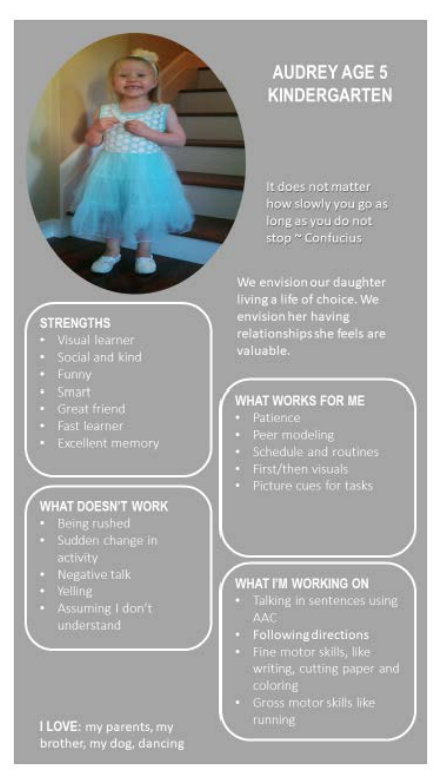The AAC strategy to identify preferences is the identification of activities and people that appear to engage a student with communication challenges. These preferences can then be used to understand what a student may be communicating when they don’t use speech; and can be leveraged to create opportunities for communication.
Implementation
The strategies for identifying preferences include interviewing family and friends who are very familiar with the student. Same age peers and siblings are often the best informants!
Topics to consider may include the following:
- Favorite Activities
- how you know they are favorites
- Favorite Subjects/Classes
- Favorite People –
- how you know they are favorites
- How do you know when the person is happy?
- How do you know the person is afraid?
- How do you know the person is “coping”?
- What calms the person?
- What Social Indicators are apparent?
- Facial expressions
- Vocalizations
- Body language
- Affection
- Humor
- What times of day are best?
- What health considerations?
It is also helpful to capture these preferences in a one-page student profile to share with those who may work with the student.
Identifying preferences does not need to be limited to non-academic activities. Just as regular-ed students develop interests in academic subject areas, we hope that our students with significant cognitive disabilities will do the same.
To give students this opportunity, it is important to know the content education classroom. Are there activities we can do together? Are there books we can read in common? Are there related field trips that we can join?
Building common academic knowledge and vocabulary among all students gives our students the opportunity to take interest in the same academic content as their peers. In order to identify favorite subjects, students must have a way to make comments, express their likes/dislikes, and indicate a choice.
Summary
The identification of preferences is essential for teaching communication, the identification of communicative forms a student may use; and what those forms may mean. Engaging family members, friends, and the individual in identifying their preferences is an essential strategy for promoting communicative competence.


